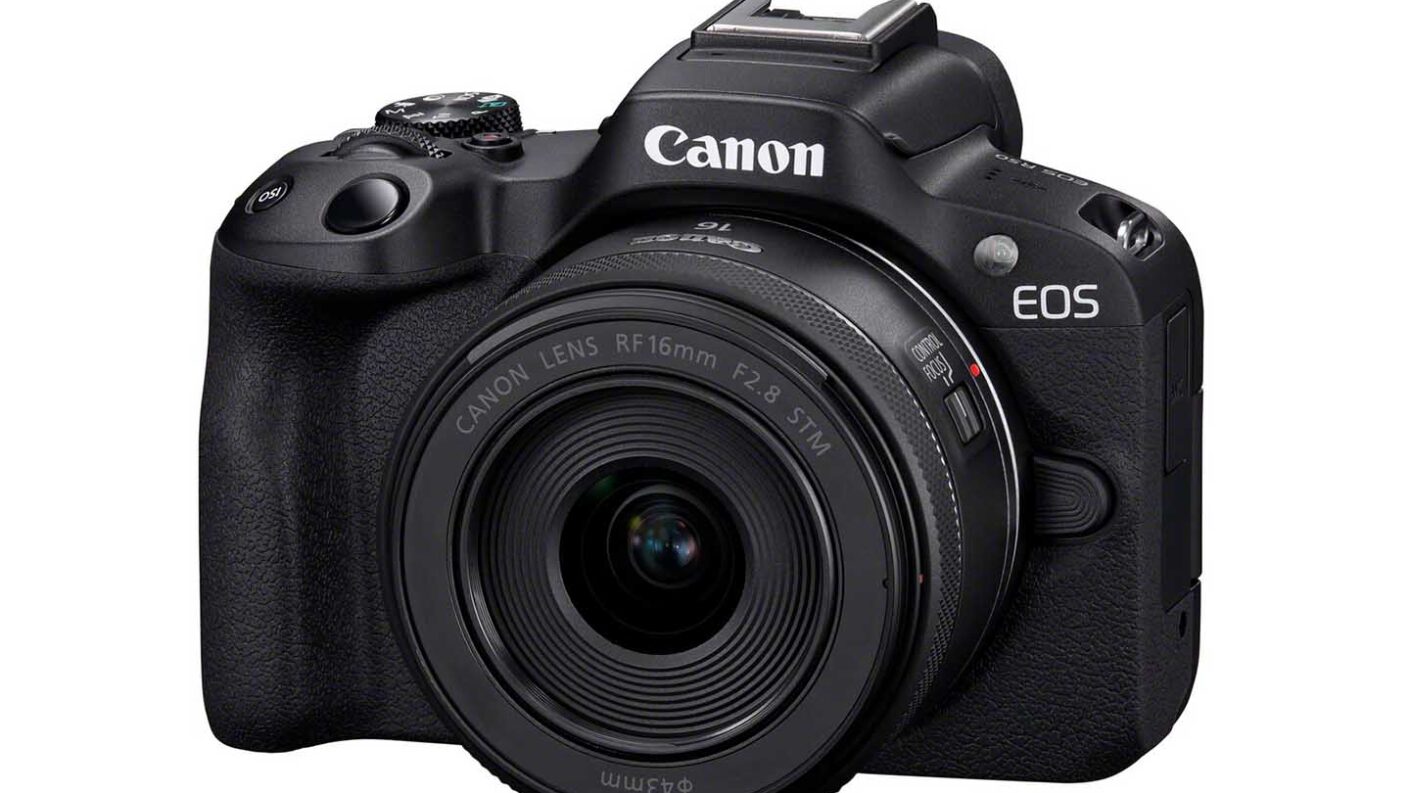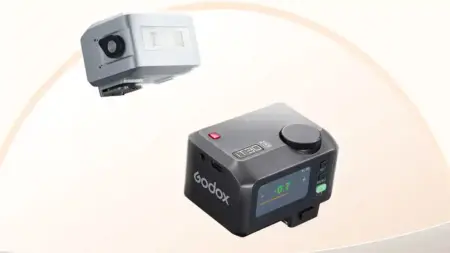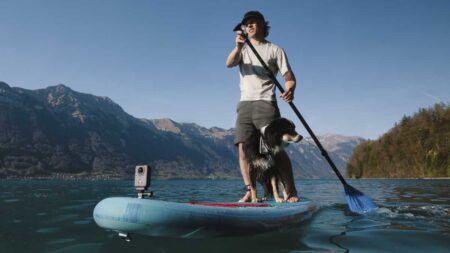Our Verdict
While our Canon EOS R50 review is still underway, it boasts an impressive set of features in an incredibly small body, with a very reasonable price tag. It looks like it could be primed to reset the entire market for what’s expected in an entry-level camera.
Billed as the gateway to the EOS R System, the Canon EOS R50 offers a range of advanced features in a compact form. Our Canon EOS R50 review is just underway, but having seen some of its technology in previous Canon cameras, there are some levels of performance that we can expect.
What is the Canon EOS R50?
The Canon EOS R50 is Canon’s latest APS-C format mirrorless camera, which sits at the bottom of its APS-C range, beneath the Canon EOS R10 and Canon EOS R7. It’s aimed at content creators, particularly those shooting lifestyle content or for social media, who may want to level up from their smartphone to an interchangeable lens camera. In essence, it’s aimed at people who might not be photographers first and foremost, but use a camera to share their passion projects.
Compact in form, the R50 is designed to be a portable, taken-anywhere camera with a range of user-friendly features to help make sharing your content a seamless process.
Price and Availability
The Canon EOS R50 price tag is £789.99 for the camera body only. Canon is also offering the camera in kits that include the body and either the RF-S 18-45mm IS STM lens or a dual lens kit with the 18-45mm and the F-S 55-210mm F5-7.1 IS STM. Kit prices have yet to be confirmed.
Features
At the heart of the EOS R50 is a 24.2-megapixel APS-C-size sensor, which is the same found in the Canon EOS R10, and is paired with Canon’s Digic X processing engine. Together, they promise faster focusing times and frame rates, and deliver a native ISO range of 100 to 32,000.
The entry-level camera uses Canon’s latest Dual Pixel CMOS AF II technology, which provides 4,503 AF positions for stills and 3,713 for movies with 100% coverage across the frame. It also means Canon’s advanced subject subject detection is on board, covering Humans (Eyes/Face/Head/Body), Animals (Dogs, Cats and Birds) or Vehicles (Racing cars or Motorbikes). It’s worth noting that it does not include the modes for horses, planes or trains that are included in the Canon EOS R8.
For video, you can record 4K UVD at up to 30p, which is oversampled from 6K for higher quality footage. In Full HD you can shoot at up to 120p for making slow-motion movies, and Canon has included its Movie Digital IS image stabilisation.
The camera also offers an HDMI port, 3.5mm jack and a Multi-function Smart ShoeMfor direct connection and power to accessories like the AD-P1, ST-R10 and Speedlite EL-5.
Interestingly, the R50 can film videos in vertical orientation with aspect markers so that you can share your videos on different platforms.
The EOS R50 also supports UVC for plug-and-play streaming with computers and smart devices, Bluetooth 4.2 and 2.4GHz WiFI.
Stills shooters can capture up to 15fps in continuous shooting mode with its electronic shutter or 12fps with the mechanical shutter, and Canon has included its Panorama and Creative Bracketing modes.
Build & Handling
The Canon EOS R50 is effectively the R series version of the EOS M50 II, but Canon has aimed for even more simplicity in its design. At just 375g with its SD card and battery, it’s one of the smaller cameras on the market and Canon has designed it with a more compact grip to help give it this compact form factor.
It has a simple button layout with its mode dial, on/off switch, top dial and shutter button are all in the usual positions. You’ll also find a separate record button to make it easier to shoot stills and video alongside each other.
Other Canon mainstays include a 3-inch vari-angle touchscreen and a 0.39-inch OLED EV.
While not a pocket camera per se, its diminutive size (116.3 x 85.5 x 68.8mm) means you could stash it in a coat pocket or a handbag – someplace where it’s quick and easy to retrieve.
While compact cameras in their traditional sense have largely gone by the wayside as that corner of the market was consumed by smartphones, the R50’s small form factor breathes some new life into the concept while offering the huge advantage of changing lenses.
Performance
While our Canon EOS R50 review is still underway, it’s too soon to comment on the camera’s performance. However, with such a capable AF system we’ve tested before and a sensor we’ve seen cope with some very difficult shooting conditions, the EOS R50 looks like it could be one of the most complete entry-level cameras we’ve seen in some time. The Nikon D3500 held that crown for many years, but Nikon to date has yet to launch a real true equivalent.
Likewise, Sony’s focus on its higher-end A7 series cameras and vlogging cameras at the other end of the range has meant its focus has shifted away from APS-C cameras somewhere in the middle. With all the focus on premium models in recent years, could an entry-level APS-C camera once again reign supreme?
If you take the R50’s feature set and very reasonable price tag into consideration, it very well could be the next market leader. If you look at Canon’s last entry-level DSLRs, the EOS 2000D and 4000D, they still sell for £369 and £459, respectively, while the EOS M50 II has a price tag of £700.
The new EOS R50 isn’t that much more money than these others and offers a whole lot more functionality. It will be interesting to see how the market responds.




